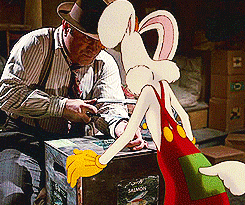It was a provocative film when it opened to little fanfare in the United States, getting generally positive reviews and a devoted cult following. But in the wake of too many killings of unarmed Black men and women by the police, the film’s revolutionary empathy becomes downright dangerous.
What does it mean to let go of culturally ingrained fears of Black men? What does it mean to admit the systemic roots of poverty and crime? What does it mean to recognize that Moses is deep-voiced and swings a sword with muscular arms but he’s a 15-year-old kid?
The reveal of his age is the quiet power for the film in a nutshell. Sam is sent to Moses’ apartment to set a trap for the aliens. She notices a Spider-Man comforter on one of the beds. She asks Moses if he has a little brother. When he says no, she asks in confusion, “How old are you?” “Fifteen,” he admits, almost sheepishly.
There is a horrific echo of Tamir Rice’s killing in this exchange. 12-year-old Rice was playing with a BB gun and was killed by police responding to a call that a grown Black man was wandering the park with a gun.
The refusal to recognize the humanity of minorities is a poison that leaches through all strata of society. Failure to acknowledge or atone for it is destroying us faster than any alien invasion ever could.
film analysis
I feel like there are probably too many people just scrolling past this so let’s go through everything that’s going on here.
1. With Roger’s voice actor standing off camera, Bob Hoskins acts into empty air and frantically sawing at his handcuff, continually looking up and down at different visual marks of various depths. Look at the slow pan up of his eyes in gif 4, and then the quick shift to his side. Think about how, on set, he was looking at nothing.
2. Starting in gif 2, The box must be made to stop shaking, either by concealed crew member, mechanism, or Hoskins own dextrousness, as he is doing all of the things mentioned in point 1.
3. In all gifs, Roger’s handcuff has to be made to move appropriately through a hidden mechanism. (If you watch the 4th gif closely you can see the split second where it is replaced by an animated facsimile of the actual handcuff, but just for barely a second.)
4. The crew voluntarily (we know this because it is now a common internal phrase at Disney for putting in extra work for small but significant reward) decided to make Roger bump the lamp and give the entire scene a constantly moving light source that had to be matched between the on set footage and Roger. This was for two reasons, A) Robert Zemeckis thought it would be funnier, and B) one of the key techniques the crew employed to make the audience instinctually accept that Toons coexisted with the live action environment was constant interaction with it. This is why, other than comedy, Roger is so dang clumsy. Instead of isolating Toons from real objects to make it easier for themselves, the production went out of its way to make Toons interact more with the live action set than even real actors necessarily would, in order to subtly, constantly remind the audience that they have real palpable presence. You can watch the whole scene here, just to see how few shots there are of Roger where he doesn’t interact with a real object.
The crew and animators did all of this with hand drawn cell animation without computerized special effects. 1988, we were still five years out from Jurassic Park, the first movie to make the leap from fully physical creature effects to seamlessly integrating realistic computer generated images with live action footage. Roger’s shadows weren’t done with CGI. Hoskin’s sightlines were not digitally altered. Wires controlling the handcuff were not removed in post.
Who fucking Framed Roger fucking Rabbit, folks. The greatest trick is when people don’t realize you’re tricking them at all.
This movie will be studied and analyzed and revered and worshipped for generations because, not only of the ground breaking techniques they used to make the magic happen but, for those of us that grew up with Bugs Bunny and Tom and Jerry, for 2 hours we were able to believe that they all really existed.
This is one if the LAST great movies that was ever made.
Let’s also not forget that writing. “Only when it was funny” isn’t just hilarious, it’s great comedy theory. It lampshades the joke, but also serves to remind the viewer that Toons have a separate set of physical laws they adhere to, mostly revolving around comedic value. Roger cannot remove his hand from the cuffs… until it’d get a laugh from an audience.
Everything about this movie, EVERYTHING about it, is so finely crafted. I could wax lyrical about it for days.





